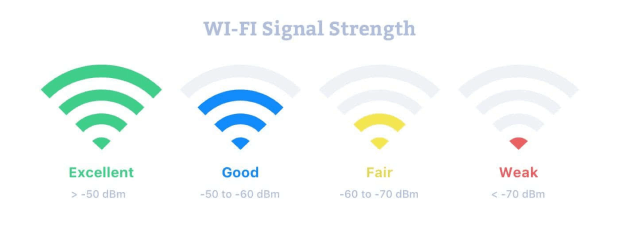
UNIVERSITY PARK, Pa. — Many might argue that bigger doesn’t always imply higher. But in terms of the profitability and survival of Pennsylvania farms, size seemingly matters, in step with a file compiled by economists in Penn State’s College of Agricultural Sciences.
Theodore Alter, professor of agricultural, environmental, and local economics, and Theodore Fuller, a development economist, each within the Department of Agricultural Economics, Sociology, and Education, co-authored the document titled “Pennsylvania Agriculture: Where the Action Is!”
Incorporating information from the U.S. Department of Agriculture’s 2012 Census of Agriculture — the maximum current to be had — the researchers checked out farm length and farm earning, with an eye fixed in the direction of figuring out what lessons of farms can better climate low commodity charges, that have fallen sharply for the reason that census becomes completed. The document includes shade-coded maps with county-stage data and makes liberal use of graphs and charts to illustrate the kingdom of Pennsylvania agriculture in 2012.
Profit and loss statement form. Graphical math definition. Movement in the classroom research
“Many sectors of Pennsylvania agriculture are in a decent spot in 2017,” stated Alter, who is co-director of Penn State’s Center for Economic and Community Development. “The charges farmers obtain for four fundamental commodities — milk, corn for grain, soybeans, and wheat — have been volatile and feature declined in the last five years, probably reducing earnings margins and farm incomes. And that increases the question: Which farms can modify and survive a prolonged decline in commodity expenses?”
Fuller stated that the long-term fashion is national.
Including Pennsylvania, there has been a growth within the range of “big” farms and a lower in the number of “small” farms. “It’s too soon to conclude how the autumn in commodity fees between 2012 and 2016 has influenced farm size and numbers, but a near observer of Pennsylvania farms in 2012 suggests that farm incomes are closely related to farm size.”
In their evaluation, the researchers grouped the 59,309 farms that existed in Pennsylvania in 2012 into 4 classes: 2,901 “Mega-Farms” (sales of $500,000 or greater), eight,913 “Large Farms” ($one hundred,000-$499,999 in sales), 16,728 “Medium Farms” ($10,000-$99,999) and 30,767 “Small Farms” (sales underneath $10,000).
Mega-farms accounted for $four.6 billion in farm product sales, or 62 percent of the country’s overall. That compared to $2.2 billion in income for large farms (29 percent of the overall), $0.6 billion in income for medium farms (eight percent of the whole), and $0.1 billion in sales for small farms (1 percent of the full).
Supernormal Profit – Consequences of Supernormal Profit and Monopoly within Businesses
It may be argued that there may be no company that is a monopoly because an actual monopoly exists when there is a single manufacturer of a commodity that has no close substitute. However, it can be said that a monopoly exists whilst one firm dominates a market. The call for the curve is downward sloping, and the monopoly firm is a price taker. Monopolies are due to economies of scale (can create an herbal monopoly) and a firm controlling a vital aspect of manufacturing. (can create synthetic monopolies).
I.E., Maximise profit. Monopolies capable of making supernormal earnings aren’t always against the general public interest; in truth, nearly all, if no longer all, earnings-based business enterprises, the goal is to make a much profit as possible at any given time. The reality that monopolies that make supernormal earnings should price decrease costs no longer always implies that they can pay to rate lower fees for items and services supplied to the general public.
The perfect opposition model and monopoly version may be used to show how supernormal
profits are received using corporations. Topics which include blessings and effect of supernormal income ( short and longer-term benefits of supernormal income to a company), forms of supernormal profits via companies, the concept of supernormal earnings in terms of consumer or public interest and performance, and approaches which companies make supernormal profits may be used to explain why monopoly firms aren’t necessarily towards the public interest about fees they price for their products.
Related Articles :
- Renaissance Science and the Song of an Extinct Sea Monster
- Trump’s doubtlessly toxic effect on the sun enterprise
- One BJP MP Supports Convicted, Rapist,
- Trump’s Immigration Plan Ought to Undermine Promise to Enhance the Economy
- Income tax survey at a company run by ex-railway minister Pawan Kumar Bansal’s family
Supernormal income is profits made more than everyday income, I., excess profit revamped the ordinary income, even as Regular profit is the amount of cash made through an enterprise that is simple enough to cover its costs and avoid going bust. Supernormal income can be in the end of the short run. Not all companies make supernormal income in the short run. Firms that make supernormal income in any marketplace show that the market is possible and that there may be an opportunity for cash to be made. These activate new providers into the marketplace, and the principle of supply and demand plays a prime role in influencing how supernormal income is distributed. However, how speedy the supernormal earnings are competed away depends on the limitations to entry in the market or enterprise.
The perfect opposition is presently deemed a theoretical marketplace and is based on some assumptions before it can exist in an enterprise. These assumptions are that: there ought to be no limitations to entry, there must be the best knowledge of the marketplace, there need to be a large number of consumers and suppliers that neither can without difficulty impact the market price, there need to be homogeneous items, and coffee transport fees. In a scenario wherein ideal competition exists, there may be the most excellent allocation of resources. However, supernormal profits can nevertheless be made by a firm within the short run. This could be a result of a brand innovation or a new idea.
Mini-Suite Profits – Niche PLR Marketing Secrets
You may well have heard the term recently Mini-Suite Profits is bandied approximately on the Internet. But what exactly are Mini-Suite Profits?
Well, Mini-Suite Profits is a brand-new software devised that will help you maximise your profits from the internet. In a nutshell, it takes private license rights (PLR) and grasps resale rights (MRR) merchandise for a specific area of interest and incorporates them into a sleek graphical package, which you may then use as your very own product. And as you’ve created and now personal this new product, when you market the product, you’ve got the benefit of keeping the whole sales fee to yourself!
So if you are searching out a way to start creating wealth on the Internet, or maybe if you are a seasoned Internet Marketing expert, this is a splendid cheaper way to create multiple traces of profits.
To give you an instance of the kind of suite you may produce, within the in-depth schooling films accompanying the product, they pick out the gardening area of interest to show you a way to go about it.
So once you’ve chosen your precise niche, in this situation, gardening.
You study the Internet to discover a few PLR or MRR gardening merchandise, which you then include into the suitable photograph template to supply your area of interest gardening suite. Sounds easy? Well, yes, it’s far clearer! If you observe a few easy motion pictures, you too could be able to produce your own fantastically provided niche advertising and marketing suites.
And once you have got completed one, find every other area of interest and start all over again! The opportunities actually are limitless the usage of this first-rate new gadget.












